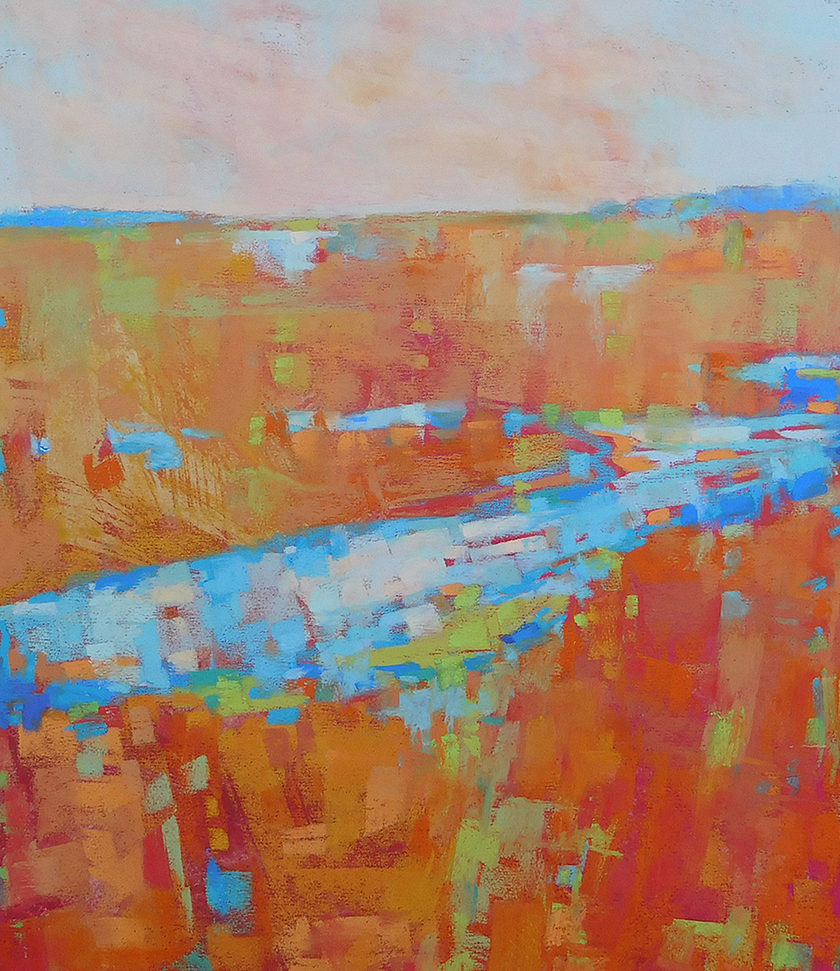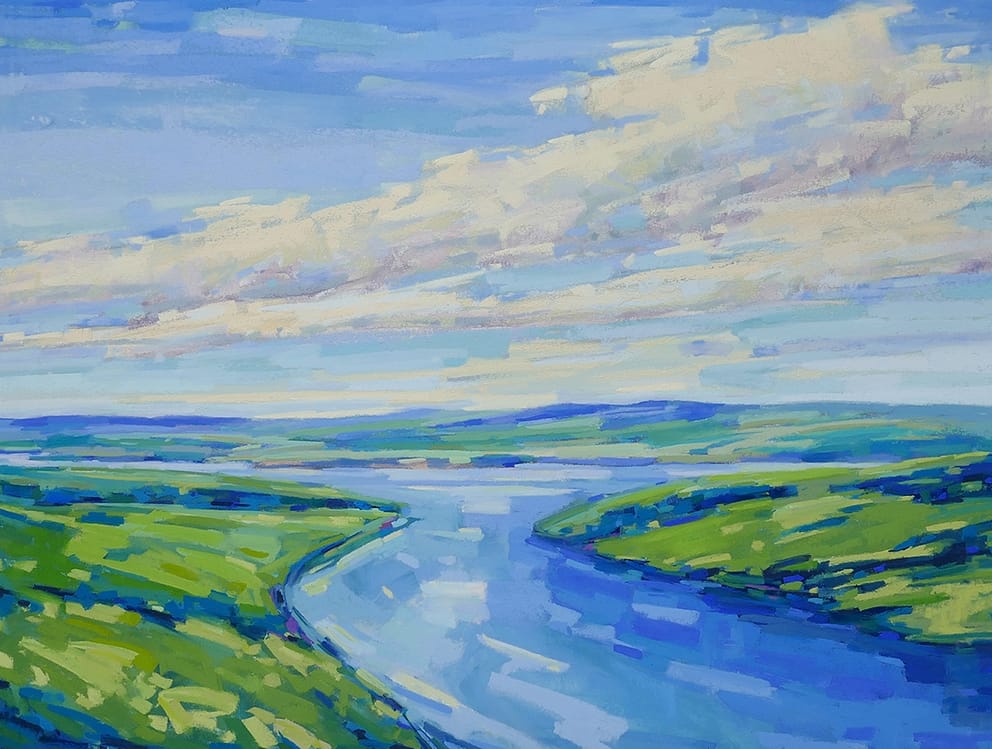Watershed Moments
Clare Gallery
St. Patrick-St. Anthony Church
Hartford
May 28, 2024
Watershed Moments, paintings of the Connecticut River’s watershed by Connecticut’s own Diana Rogers on display at the Clare Gallery in St. Patrick-St. Anthony’s Church, helped me to finally get a handle on what abstract visual work is about and why it’s sometimes the best way to represent reality.
One of the most interesting aspects of Rogers’ work is that she works en plein air, which is a French expression for “in the open air”: Artists paint outdoors in nature, allowing them to capture natural light and other subtleties more accurately. To think that Rogers was looking directly at the scenes she was painting while working makes her impressionistic style even more interesting.
“Solstice Arrives at the Marsh” is my favorite piece from the exhibition, partially because of the strong impressionistic feeling it gives off. The large splotches of orange and red particularly in the upper part of the painting give the scene an overwhelming feeling, as if there are so many trees bursting out in radiant autumn colors that it’s foolhardy to try and draw each one individually. The trees dominate even the water running between the fore and aft ground, rendering millions of gallons of water as a mere afterthought.

The ability to convey such mood and meaning is something that I’ve learned to appreciate about abstract works. By taking a step away from accuracy and recreation in favor of impression and reinterpretation, Rogers makes the scenery feel more realistic. The feeling of the landscape comes through forcefully in her work; it connects me to what she saw more viscerally than realism could.
The same is true for “Springtime View Toward Haddam,” but in an opposite kind of way. Rogers lavishes the canvas with details, still abstract in form but specific in their design. From the dozens of leaves she paints individually to the wisps of clouds in the blue sky behind them, each shape maintains its own personality while forming the whole. If you look carefully, almost all of the leaves are some form of quadrilateral, helping them draw the eye against the more relaxed and varied shapes that form the backdrop and tree trunks. The sharp edges of the leaves embody the blossoming of spring.

Then there’s “View Across Wetlands to the Sound,” which tells its story through rich brushstrokes and blending of colors. Where the leaves of spring are all vertical shapes drawing the eye upward, the wetlands are represented by long, horizontal lines that blur with the water. It gives the image a more eternal feel; these grasses and plants don’t pop up one day and disappear the next, they endure and become part of the permanent landscape, indistinguishable from the waterways they call home. The wetlands and sky blend together into an everlasting firmament, giving the otherwise grounded wetlands an airy, almost celestial quality. The only difference between the water and the sky is the lack of greenery, which is another element of abstract work. It may not be photorealistic, but it’s also not fantasy, so the plants do stay firmly rooted.

Abstract art has often eluded me, but this exhibit by Diana Rogers helps me to understand some of the purpose behind abstractions. By stripping away the details of reality, abstract work can help scenes become a truer version of themselves and represent those qualities which sometimes get lost. I greatly enjoyed seeing Rogers’ work on display; hope to find more of it soon.
NEXT
The Clare Gallery will host Works by Jill Vaugh beginning Sept. 5.
Jamil goes to play some games and try some new food.






